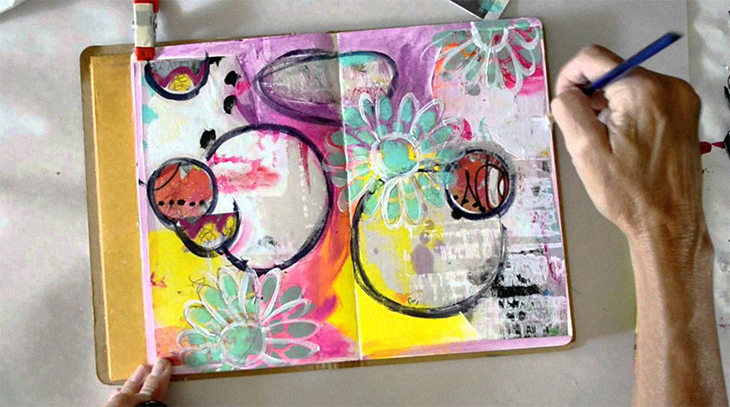
Everyday life has many triggers for stress and negative emotions like disappointment, frustration, and anger. If not addressed, these could lead to mental health problems like anxiety and depression. The pandemic has made life even more stressful for everyone and is triggering many negative emotions. People need an outlet to release the negativity and reach out for positive energy. Creative pursuits provide both.
Art journaling is a creative practice accessible to everyone, even those claiming no artistic talent. Scrapbooking is also a form of art journaling. You can integrate scrapbooking into your lifestyle as a form of productive leisure.
The Science of Scrapbooking as Therapy
A research paper published in April 2020 showed how scrapbooking enabled women to express their thoughts and emotions over the abusive intrusions of men in their lives. It also cited different studies on how people used scrapbooking. One example was for women to express their experiences of unwanted and unnecessary medical procedures. Another was for queer people who wanted to explore motherhood. Traumatized children and bereaving people also started scrapbooking. For older adults, scrapbooking was a way to stimulate memory.
Scrapbooking is different from written journals or diaries because complete narratives are not required, and words can come in fragments. Thoughts and emotions not expressed in terms can be expressed in drawings, stamps, collages, or other materials. Even if thoughts or emotions cannot be identified clearly by the person, the choices of images or materials and their juxtaposition can reflect the subconscious. Scrapbooking can also capture fleeting feelings.
How to Do Mixed-Media Art Journaling and Scrapbooking
According to art educator and abstract artist Heather Neilson, art journaling expands your creative intuition. There is no right or wrong way to do it. You only explore and experiment, constantly asking “what if?” There is no goal of a finished product, and a page can be a continuing project. Even after moving on to other pages, you can always go back and work further on a previous page. Because you can choose not to show your art journal to anyone, there is no pressure.
The Materials You Need
You can use a store-bought art journal or scrapbook, or you can make one yourself. Some people buy old coffee table books with thick pages from dime stores and journals on these. Others create journals from old magazines. If you are not using a journal with pages meant for paint and intend to use acrylic paint or gouache, you must first cover every page with gesso. Gesso will thicken the page and prevent it from wrinkling. You can also use oil pastel, colored pens, and colored pencils.
You can paint or sketch on the pages. You can add words. You can paste on collaged images cut out from magazines or from your own painted papers. You can add stickers, fabric, ribbons, and other materials like leaves or dried flowers. You can use stamps of various designs with different colors of ink. However, so you’re sure you don’t mix colors in between stamps, you’ll need to use a stamp cleaner like Simply Shammy. Or you don’t have to clean your stamps if you’re looking to mix colors in your stamps for your signature art style.
Where You Can Start
There are many examples of mixed-media art journals online to help you get started. These online resources can inspire you when you don’t know when to begin. You will find that there is a vast range of styles. You will realize that there are styles that resonate with you. If you are not yet confident with how to start, you can use these as your guide. You will then grow from there to find your style.
When starting work on a page, you can first reflect on what you want to express. If you can find a word or a phrase, write it down on the page. You can then work around this idea. If you only have a feeling or an emotion that you cannot verbalize, try to find images in magazines that elicit the same feeling and use these in a collage. Identify the colors that also match how you feel and use these on the page.
Another thing you can do is to collect your favorite inspirational quotations on your art journal pages. Working on a page with such a quotation is like meditating on it until it sinks into your soul.
Life is complicated, and unexpected experiences can jolt us at any time. Art journals and scrapbooks can provide a lifeline when things get rough. You can scrapbook to express yourself on days that are good and days that aren’t as good. By browsing through completed pages, you can see your continuing journey with the ups and downs. The remaining unused pages inspire you to go on.
Meta title: Art Journaling: How You Can Start and What You’ll Need
meta desc: Starting a creative journal project is a beautiful and fulfilling way of dealing with stress, releasing negative emotions, reaching out for positivity, and expressing yourself.


